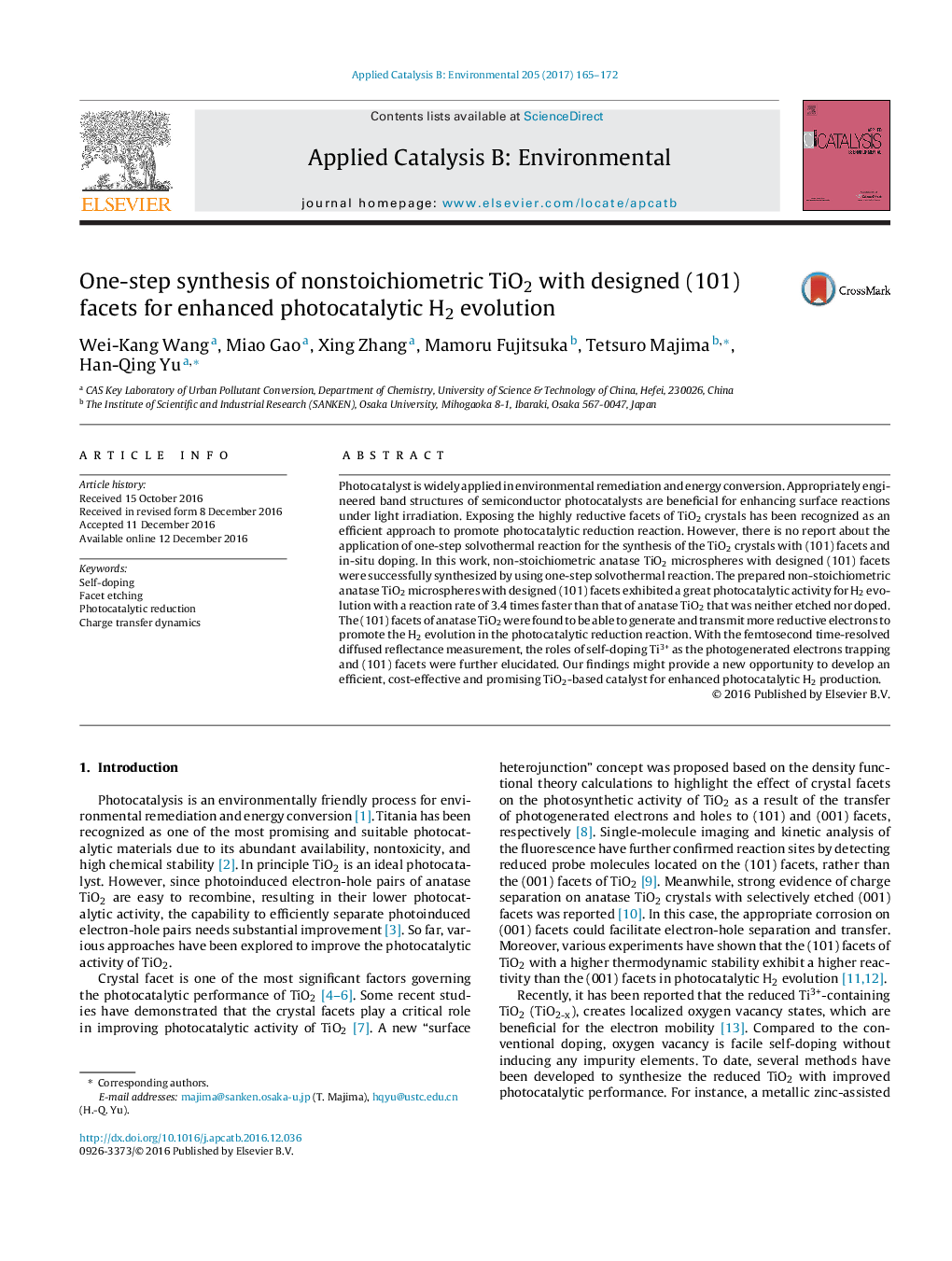| Article ID | Journal | Published Year | Pages | File Type |
|---|---|---|---|---|
| 6454298 | Applied Catalysis B: Environmental | 2017 | 8 Pages |
•Nonstoichiometric TiO2-x with desired (101) facets was synthesized by one-step solvothermal method.•TiO2-x with desired (101) facets facilitated the separation of e−/h+ pairs and enhanced photocatalytic H2 evolution.•The unambiguous effect of self-doping Ti3+ as the photogenerated electrons trapping and (101) facets is further elucidated.•The TDR measurement confirmed that doping and facet-etching optimization facilitated the separation of electron-hole pairs.
Photocatalyst is widely applied in environmental remediation and energy conversion. Appropriately engineered band structures of semiconductor photocatalysts are beneficial for enhancing surface reactions under light irradiation. Exposing the highly reductive facets of TiO2 crystals has been recognized as an efficient approach to promote photocatalytic reduction reaction. However, there is no report about the application of one-step solvothermal reaction for the synthesis of the TiO2 crystals with (101) facets and in-situ doping. In this work, non-stoichiometric anatase TiO2 microspheres with designed (101) facets were successfully synthesized by using one-step solvothermal reaction. The prepared non-stoichiometric anatase TiO2 microspheres with designed (101) facets exhibited a great photocatalytic activity for H2 evolution with a reaction rate of 3.4 times faster than that of anatase TiO2 that was neither etched nor doped. The (101) facets of anatase TiO2 were found to be able to generate and transmit more reductive electrons to promote the H2 evolution in the photocatalytic reduction reaction. With the femtosecond time-resolved diffused reflectance measurement, the roles of self-doping Ti3+ as the photogenerated electrons trapping and (101) facets were further elucidated. Our findings might provide a new opportunity to develop an efficient, cost-effective and promising TiO2-based catalyst for enhanced photocatalytic H2 production.
Graphical abstractFigure optionsDownload full-size imageDownload high-quality image (147 K)Download as PowerPoint slide
